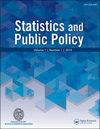A Re-Analysis of Repeatability and Reproducibility in the Ames-USDOE-FBI Study
IF 1.5
Q2 SOCIAL SCIENCES, MATHEMATICAL METHODS
引用次数: 5
Abstract
Abstract Forensic firearms identification, the determination by a trained firearms examiner as to whether or not bullets or cartridges came from a common weapon, has long been a mainstay in the criminal courts. Reliability of forensic firearms identification has been challenged in the general scientific community, and, in response, several studies have been carried out aimed at showing that firearms examination is accurate, that is, has low error rates. Less studied has been the question of consistency, of whether two examinations of the same bullets or cartridge cases come to the same conclusion, carried out by an examiner on separate occasions—intrarater reliability or repeatability—or by two examiners—interrater reliability or reproducibility. One important study, described in a 2020 Report by the Ames Laboratory-USDOE to the Federal Bureau of Investigation, went beyond considerations of accuracy to investigate firearms examination repeatability and reproducibility. The Report’s conclusions were paradoxical. The observed agreement of examiners with themselves or with other examiners appears mediocre. However, the study concluded repeatability and reproducibility are satisfactory, on grounds that the observed agreement exceeds a quantity called the expected agreement. We find that appropriately employing expected agreement as it was intended does not suggest satisfactory repeatability and reproducibility, but the opposite.Ames-USDOE FBI研究中重复性和再现性的再分析
摘要法医枪支鉴定,即由受过训练的枪支检查员确定子弹或子弹是否来自普通武器,长期以来一直是刑事法院的支柱。法医枪支鉴定的可靠性在一般科学界受到挑战,作为回应,已经进行了几项研究,旨在表明枪支检查是准确的,即错误率低。较少研究的是一致性问题,即同一子弹或弹壳的两次检查是否得出相同的结论,由一名检查员在不同的场合进行——评分者内部的可靠性或可重复性——或者由两名检查员进行——评分器间的可靠性或再现性。埃姆斯实验室USDOE在2020年提交给联邦调查局的一份报告中描述了一项重要研究,该研究超越了准确性的考虑,调查了枪支检查的可重复性和再现性。报告的结论自相矛盾。观察到的主考者与自己或其他主考者的一致性似乎平平。然而,该研究得出的结论是,可重复性和再现性令人满意,理由是观察到的一致性超过了一个称为预期一致性的量。我们发现,按照预期适当使用预期一致性并不意味着令人满意的可重复性和再现性,相反。
本文章由计算机程序翻译,如有差异,请以英文原文为准。
求助全文
约1分钟内获得全文
求助全文
来源期刊

Statistics and Public Policy
SOCIAL SCIENCES, MATHEMATICAL METHODS-
CiteScore
3.20
自引率
6.20%
发文量
13
审稿时长
32 weeks
 求助内容:
求助内容: 应助结果提醒方式:
应助结果提醒方式:


